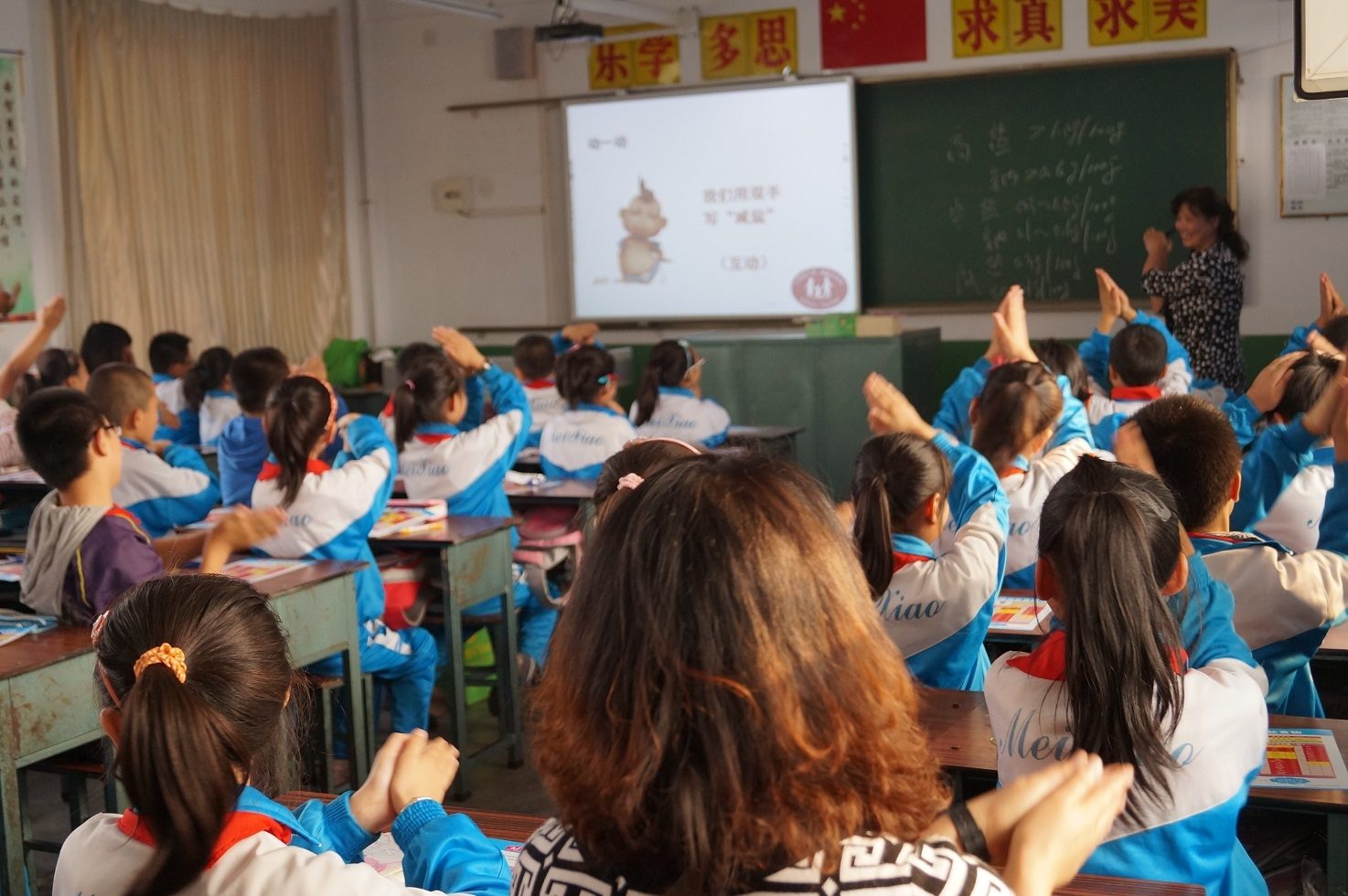
New research shows that children can be taught to lower the whole family’s salt intake
A new study published in the British Medical Journal (BMJ) today, shows that children can be educated and play a key role to get their family to reduce salt intake. This novel education program is the first of its kind and was carried out in northern China.
Funded by the Medical Research Council (MRC) of the United Kingdom, the School-based education programme to reduce salt intake, also known as School EduSalt study, successfully lowered the population’s salt intake by a quarter with a significant fall in systolic blood pressure in adults, which is critical to the prevention and control of cardiovascular disease (CVD) in China
Excessive salt intake has proven to be the major factor that raises blood pressure (BP), which can lead to stroke and CVD , the leading causes of death in China and worldwide.
Around 80% of CVD deaths occur in developing countries. In China, the largest developing country in the world, high salt consumption is considerably prevalent in both adults and children; the average salt intake is as high as 12g per day. That is responsible for the large numbers of people who suffer from CVD and hypertension in this country.
Compelling evidence shows that a modest reduction in salt intake can lower BP and reduce CVD risk. The World Health Organization (WHO) has also recommended salt reduction as one of the top three priority actions to tackle the global chronic disease burden.
However in China, especially the northern areas where salty diet is quite popular, it’s very difficult to persuade individuals to change their diet.
Healthcare researchers from The George Institute for Global Health at Peking University Health Science Center, Queen Mary University of London and Changzhi Medical College now find out a novel approach that can tackle this health problem: educate the school children and empower them to push their parents to eat less salt.
“Unlike in developed countries, the major source of salt in the Chinese diet is salt added by the consumers themselves during food preparations. Therefore, developing strategy that can encourage the general public to cut off salt used at home is very important.” said Professor Yangfeng WU, co-principal investigator of the study, senior director at The George Institute for Global Health at Peking University Health Science Center.
“Considering the big influence children have on their own families in China, we implemented this school-based education programme to evaluate if the primary school students can be taught the knowledge of salt and deliver the message to their families to reduce salt intake.”
This cluster randomized controlled trial was carried out in Changzhi city, Shanxi province, in 2013. 280 students with mean age of 10 from 28 primary schools along with 560 adult family members were enrolled and further randomly assigned (1:1) to either the intervention or the control group.
“According to the baseline survey of our study, the average salt intake among the 10 years-olds was 7 grams per day, and 11.7 grams per day in their parents, estimated by 24h urinary sodium; while the WHO recommended level is 5 grams per day for adults.” said Professor WU.
During the one-semester time (around 4 months), students from the intervention group were given nine innovative health curriculums delivered by local health educators who were trained by health researchers. Key messages including the harmful effects of salt on health, the salt reduction target, recommended level of salt intake, and how to reduce salt consumption were delivered to the children.
Children also needed to take what they had learnt to home and persuade the persons who cooked for the whole family to reduce the amount of salt used at home.
The study also developed supplementary materials like posters, newsletters, and catchy phrases in Chinese. Portion control spoons and salt container were dispatched as well. Every two weeks the research team would weigh the container of each family to monitor the participants’ salt consumption. (The study protocol has been published by BMJ Open in July, 2013, see link)
24 hour urine was collected and BP measured for all participants before and after the intervention to evaluate the effects of the intervention in change in sodium intake as well as BP. The results showed that the daily salt intake among children who received the education intervention was reduced by 1.9 grams compared with the control group; while for the adults in the intervention group, a reduction of 2.9 grams was observed.
On the other hand, the mean effect on systolic BP was -0.8 mmHg in children and -2.3mmHg in adults. It was estimated that a reduction of 2.3 mmHg in systolic BP would reduce incidence of strokes by about 9% and heart attacks by about 5%. In China, this could prevent around 153,000 stroke and around 47,000 heart attack deaths per year.
The follow-up also indicated that the children and their families had switched to healthier, less salty, dietary habits.
“This is a very impressive result as to date, no country has ever demonstrated a successful salt reduction programme where most of the salt in the diet is added by the consumers.” Study principal investigator Dr Fengjun HE from Queen Marry University in London commented.
“An amazing reduction of a quarter in salt intake was achieved. And this was accompanied by a significant fall in systolic BP in adults.” Dr HE continued, “The findings suggest that the WHO’s target of 30% reduction in salt intake by 2025, could be achieved in China and result in a major reduction in CVD morbidity and mortality if this cost-effective education programme is implemented nationwide.”
“Universal primary education is a common goal in most national education policies, therefore this novel public health strategy is possible to bring greater impact in preventing hypertension-related diseases compared with the traditional way.”
Professor Graham MacGregor, co-principal investigator of the study and Chairman of World Action On Salt and Health (WASH)*, pointed out the study’s major public health implications, “In addition, children are likely to set habits and attitudes that will persist throughout adulthood. And as a wide range of population from children to all of their family members were all engaged, it is likely to achieve a large impact.”
“We can also foresee that this approach should be combined with other strategies, for example, to work with the food industry to gradually reduce the salt added to processed foods as more and more Chinese tend to consume processed foods. That has been successfully implemented in the UK and a fall in BP and CVD mortality among its population has been witnessed.” said Professor MacGregor.
Professor WU added, “A ‘whole society’ approach is needed to tackle chronic diseases-the biggest health problem facing the entire world. The School EduSalt study proves the feasibility of engaging various social sectors to truly improve people’s health and brings the best evidence into health decision making for the future.”
Dr. Jacqui Webster, Director of the World Health Organization Collaborating Centre on Population Salt Reduction** based at The George Institute, said she was excited about the result and congratulated the research team for such a great achievement. “Children are always considered a vulnerable group in society with little influence on the decisions made by their families” she said. “However, the School-EduSalt is a very inspiring case study as the ‘little emperors’ managed to lower the salt intake of both their parents’ and grandparents’ successfully.
At the time of the 2015 World Salt Awareness Week, which this year is focusing on a healthy start for children, it is a great pleasure to witness another piece of strong evidence that will help to support effective implementation of salt reduction policy and strategy around the world.”




